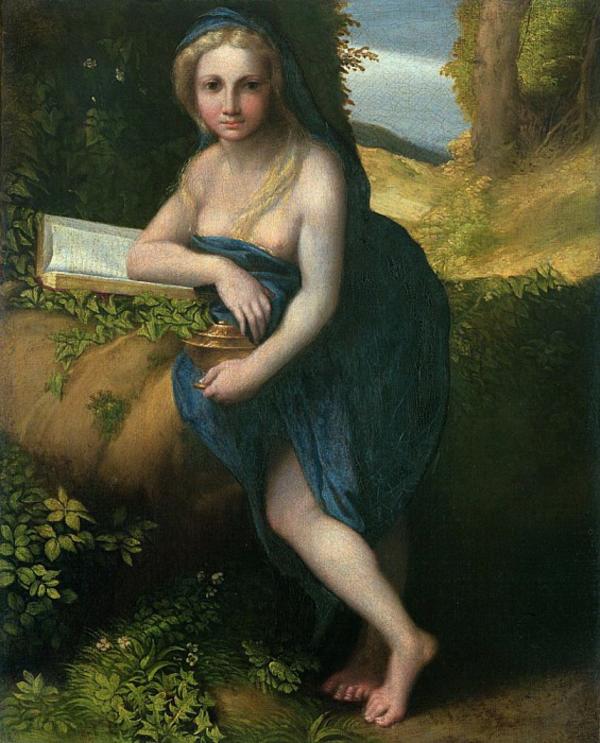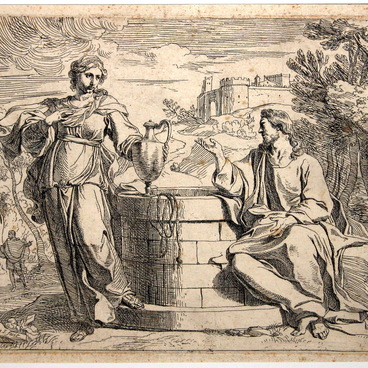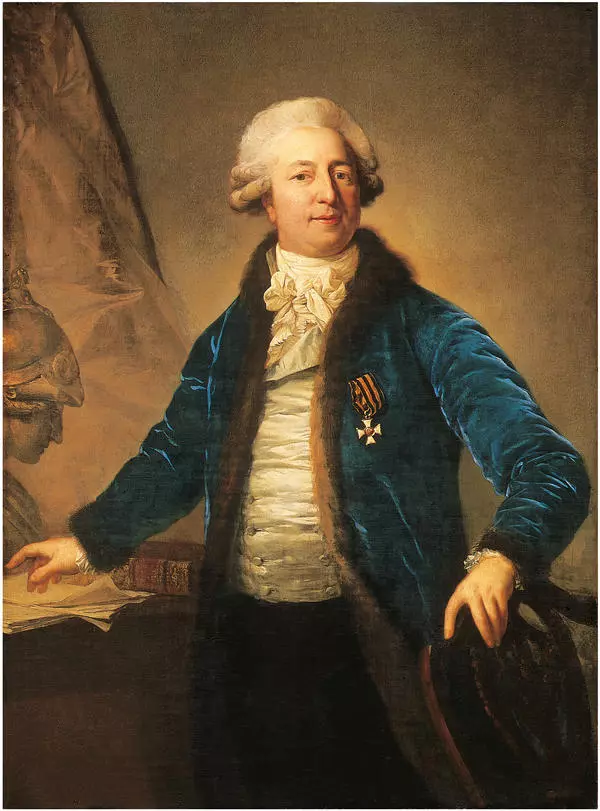The Swiss artist Anton Graff painted the Reading Mary Magdalene inspired by the painting Magdalene by the Italian artist Antonio da Correggio, a High Renaissance representative. The last time the original source was seen in the middle of the 19th century — it was exhibited in the Dresden Art Gallery.
Reading Mary Magdalene
Время создания
1797
Размер
31x41 cm
Техника
Copper, oil
Коллекция
5
Открыть в приложении#3
Anton Graff
Reading Mary Magdalene
#2
#6
Mary Magdalene was among those who followed Jesus Christ. She is one of the most venerated Christian saints, a myrrh bearer. According to the Gospel, she was possessed by demons in her youth and was a whore. In Capernaum, Jesus healed Mary from seven demons. Filled with gratitude, she followed Christ, listened to His sermons, then witnessed His crucifixion, burial and resurrection.
Western art traditionally depicts Mary Magdalene with her hair loose and head uncovered, and a vessel of myrrh, with which she washed Jesus’ feet, next to her or in her hands. Graff’s Mary Magdalene is a repenting sinner. Semi-naked, in a simple cloak, she reads the Bible, unlike Correggio’s Magdalene, who looks at the viewer. There is the ever-present vessel of incense behind her.
Western art traditionally depicts Mary Magdalene with her hair loose and head uncovered, and a vessel of myrrh, with which she washed Jesus’ feet, next to her or in her hands. Graff’s Mary Magdalene is a repenting sinner. Semi-naked, in a simple cloak, she reads the Bible, unlike Correggio’s Magdalene, who looks at the viewer. There is the ever-present vessel of incense behind her.
#8
Correggio (Antonio Allegri) — Magdalene (c. 1518-19). img via: commons.wikimedia.org
Anton Graff spent most of his life painting portraits. His legacy includes more than two thousand paintings and drawings; some are regarded as historical documents. Thanks to Graff, we know what the philosopher Friedrich Schiller, the poet Christian Gellert, the writer Henrietta Hertz, Prince Heinrich of Prussia and other prominent people of the era looked like. The portrait of the Prussian King Frederick the Great is believed to be the best work of the artist.
#11
Andy Warhol styled it for the Sans Souci Palace in 1986.
Graff was commissioned by the German and Russian, Polish and Baltic nobility. In 1796, Empress Catherine II asked the artist to make copies of paintings by Antonio da Correggio, Van Dyck, Rubens, Raphael, Cignani and Batoni for the Hermitage in St. Petersburg. Catherine awarded the artist with a gold medal of 70 ducats in excess to what had been agreed for this work.
#10
Graff made over 80 self-portraits. He gave originals and replicas to friends, clients and patrons, many of which diffused into private collections during the artist’s lifetime. The painter was interested in physiognomy, and self-portraits helped him to track changes in a human appearance. Exercises with his own face helped him to grasp defining features of facial expressions of those he painted. Graff preferred simple and natural postures, depicted hands and arms, shoulders and chest life-size, stepping away from distortion and allegorical elements. At the end of his life, he became interested in landscapes akin to late Impressionism, although he believed that ‘a still landscape is not as easy to meet as a man with a continuously changing head’.
#12
Irbit State Museum of Fine Arts
читать дальшескрыть
00:00
00:00
1x
Reading Mary Magdalene
Время создания
1797
Размер
31x41 cm
Техника
Copper, oil
Коллекция
5
Открыть в приложении
Поделиться



